MovingCamera
Photography & Travel
/// Photo trip Berlin
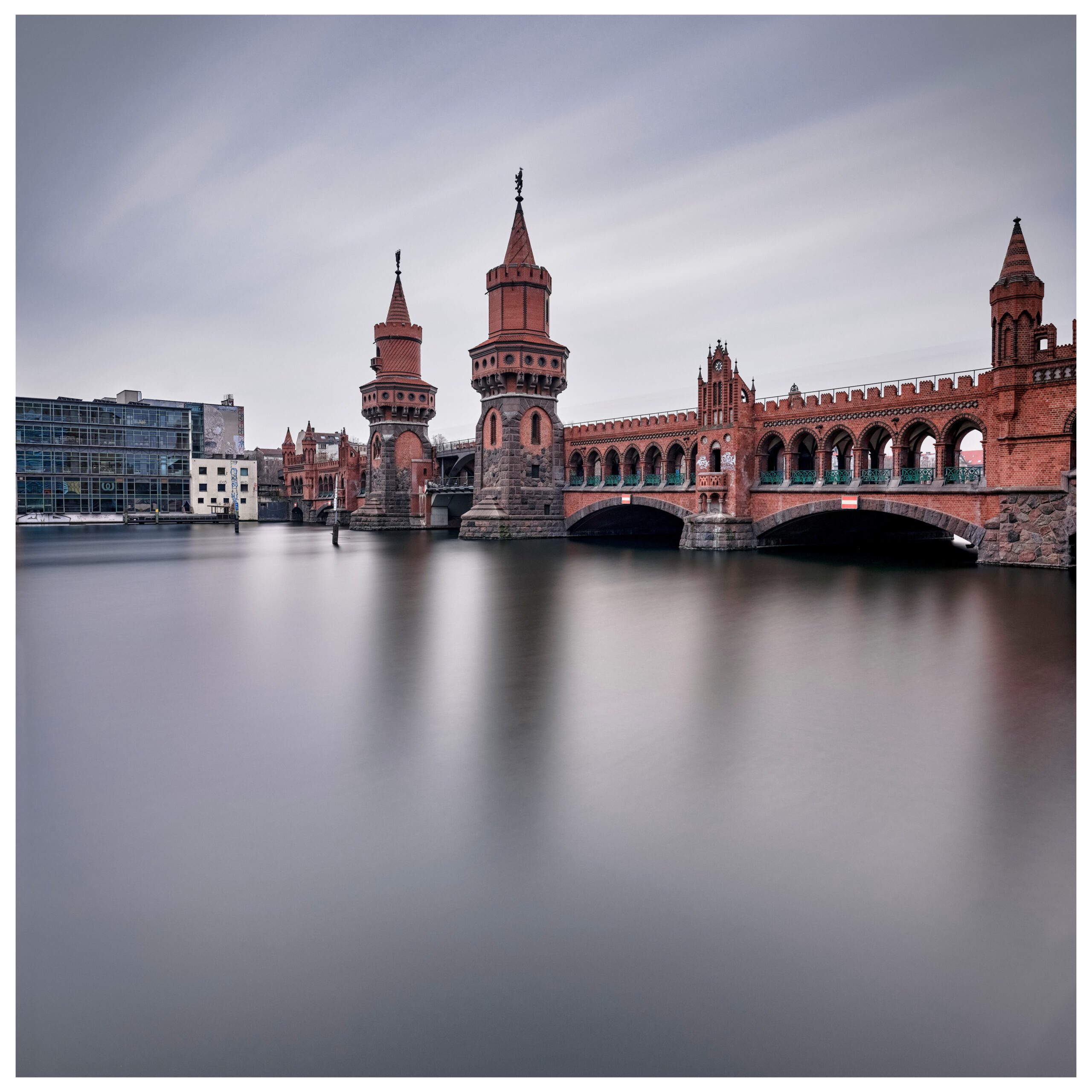
Finally back in Berlin. After a really long time it was a great feeling to stay in the capital. Since I used to live in Berlin for years, every visit here means coming home for me. I had a whole week to set out on some of the photographic goals that I had picked out. I took the weather as it came, from temperatures -10 to +12. Sunny, bright blue sky, to cloudy and greyish. All in all, I enjoyed and made the most of my time until the last moment.
Here I was at the Oberbaum Bridge on the Spree, built in 1894, which connects the districts of Kreuzberg and Friedrichshain. The Friedrichsheim-Kreuzberg landmark is probably also known to many because this region has a lot to offer on the party mile. So if you are in Berlin, you should simply drive to U Schlesisches Tor. Berlin, always worth a trip.
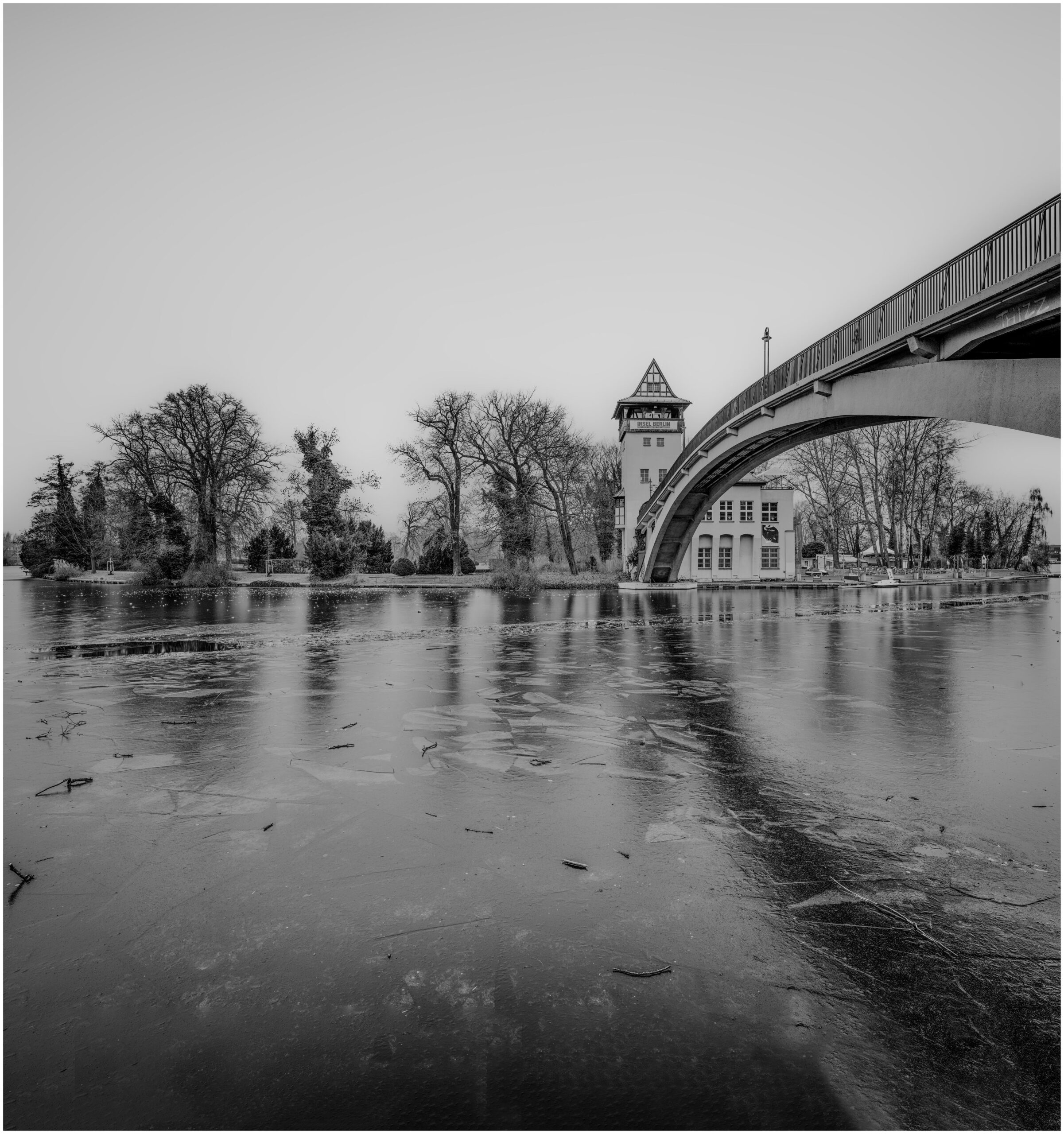
One of my goals for the day was to visit the island of youth, located between Treptower Park and Forst Plänterwald. Of course, I was very curious to see what would await me there away from the tourist paths, away from the hustle and bustle of the city.
When I got there, I saw it, the eye-catcher for my picture, the Abbey Bridge, which is the oldest composite steel bridge in Germany and the only access to the island. However, before I crossed over, I found my location to take photos. It was a good idea to take pictures on the right and left. However, letting the bridge run into the picture from the right seemed more appropriate to me, as it focused the view more on the island.
Last but not least, I took the opportunity to cross the bridge to explore the island in the middle of the Spree. A wonderful piece of land, which is also used as an experimental site for all forms of art. Numerous cultural offerings, including live music, take place there again and again for young and old.
I made a conscious decision to present the picture in black and white. For me a nice reduction to the essentials. Hopefully it reflects the calm I felt around me.
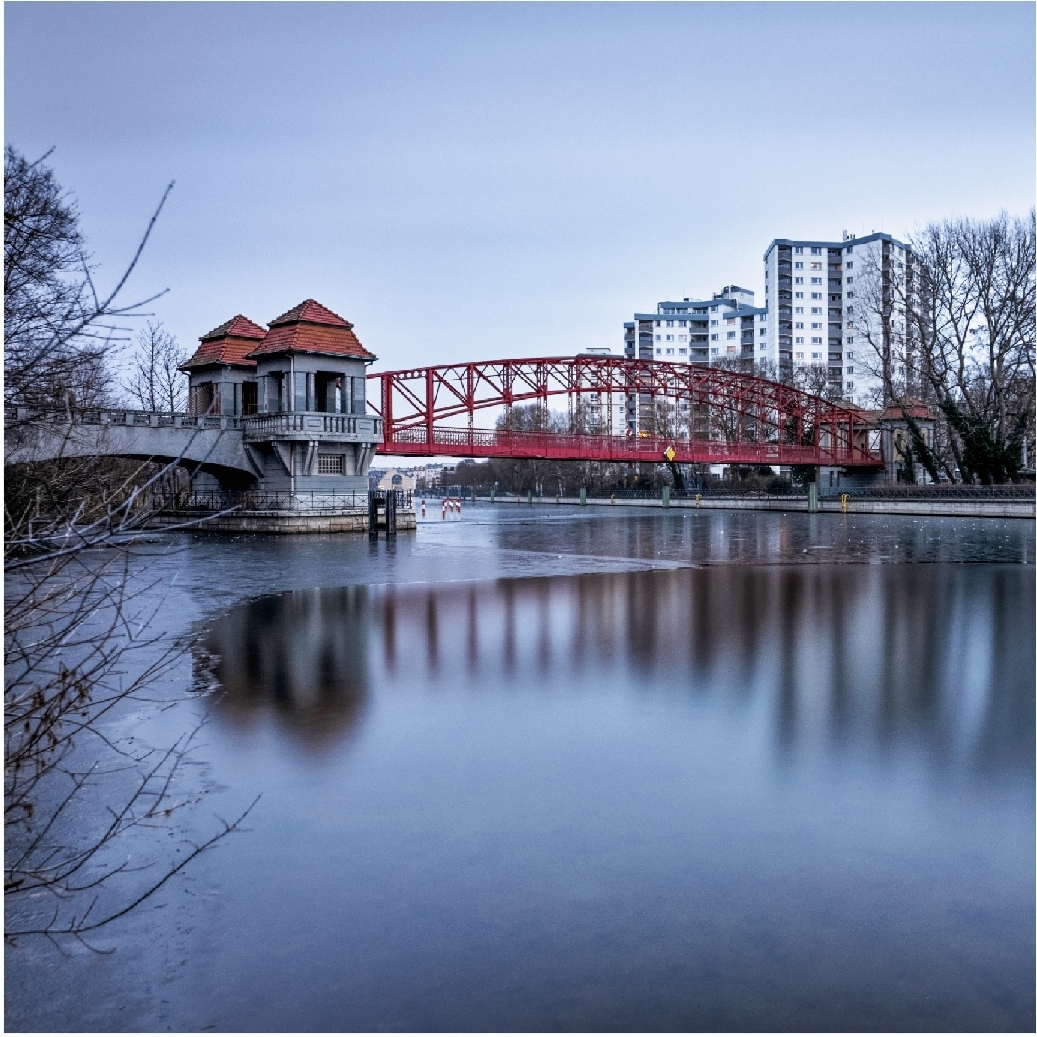
Of course, as always, I was excited about what to expect. So it started for me quite early in the morning in fairly stable weather, although there was rain in the air, right after breakfast.
First I headed for the „Island of Youth“ in Treptower Park, from there to the „Oberbaumbrücke“ in Friedrichshain / Kreuzberg and finally, just in time before sunset, to the „Tegeler Hafenbrücke“ in the district of Tegel, which I also didn’t know. The truss arch bridge was built in 1908. With a length of 91 meters, the pedestrian bridge spans the entrance to Tegler Hafen and the mouth of the Tegeler Fliess. Today it is a listed building and is often used as a backdrop for filming.
By the way, the Teglerbrücke is also popularly known as the „Six Bridge“. That’s because in 19th-century Berlin you had to pay half a groschen, i.e. a six, to cross some of the city’s major bridges.
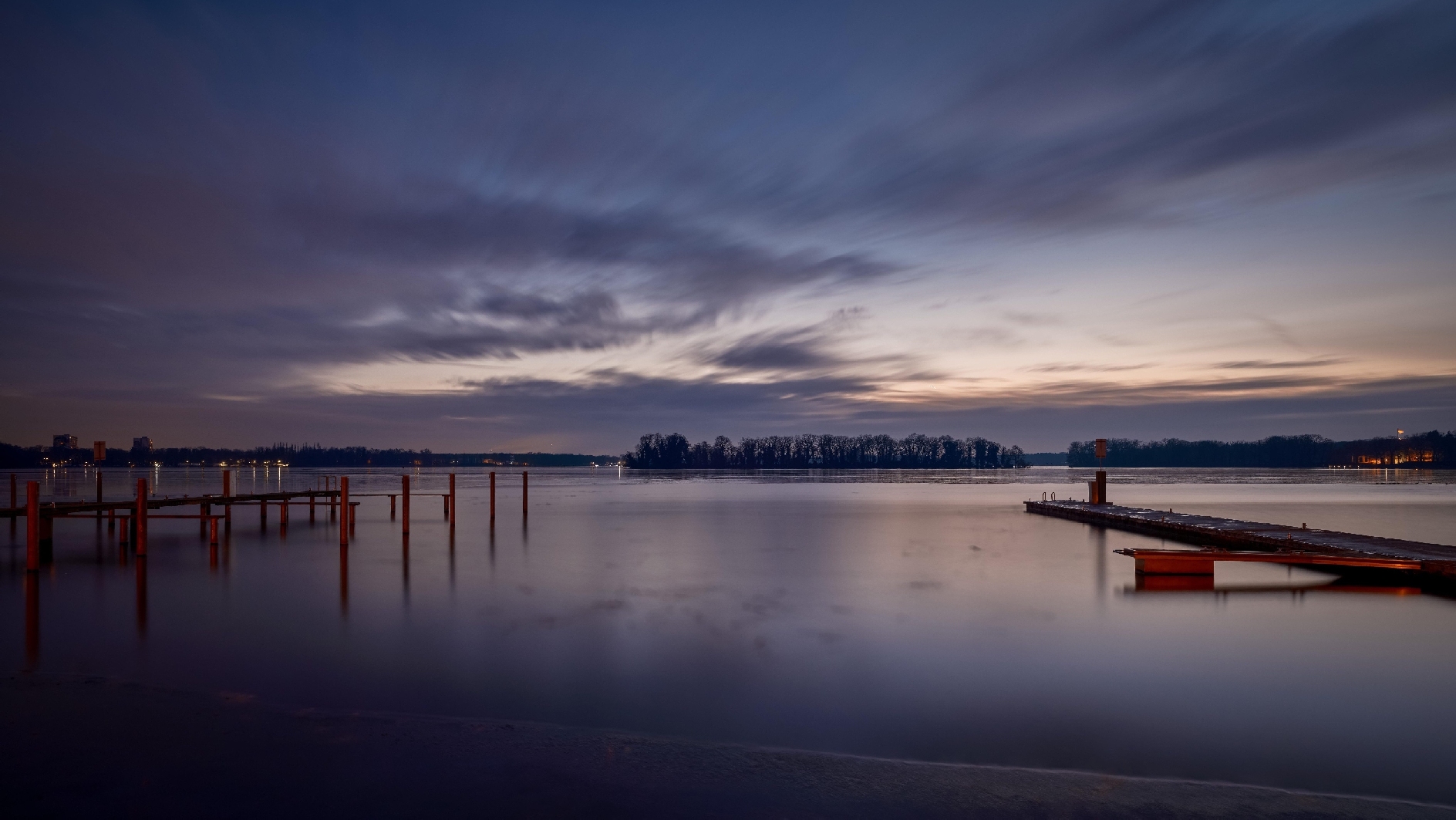
This picture was taken shortly after sunset at Lake Tegel, in the Berlin district of Tegel in the Reinickendorf district. After I had captured my picture of the Tegeler Hafenbrücke, popularly known as the „Six Bridge“, on the chip.
I had packed everything together to start my way back. From my vantage point I looked directly over to the lake and the thought came to me to catch the rest of the light in order to capture this atmosphere that was brewing. The sun had already set, which I found very appealing. I quickly ran back across the bridge to the shore of the lake. My tripod was quickly set up. Just attach the camera and filter and off you go. The two bridges in the front collar were just too predestined to help shape my picture. Wonderful, the view of the small island „Hasslewerder“ lying in the middle of the lake. It was wonderful that there were also appropriately atmospheric lights from nearby boats and houses on the horizon.
For me, another remarkable and varied photo day came to an end here at the lake. On my way back to the Alt-Tegel subway station, I stopped at an Indian restaurant with an appetite. Great, it was to my liking.
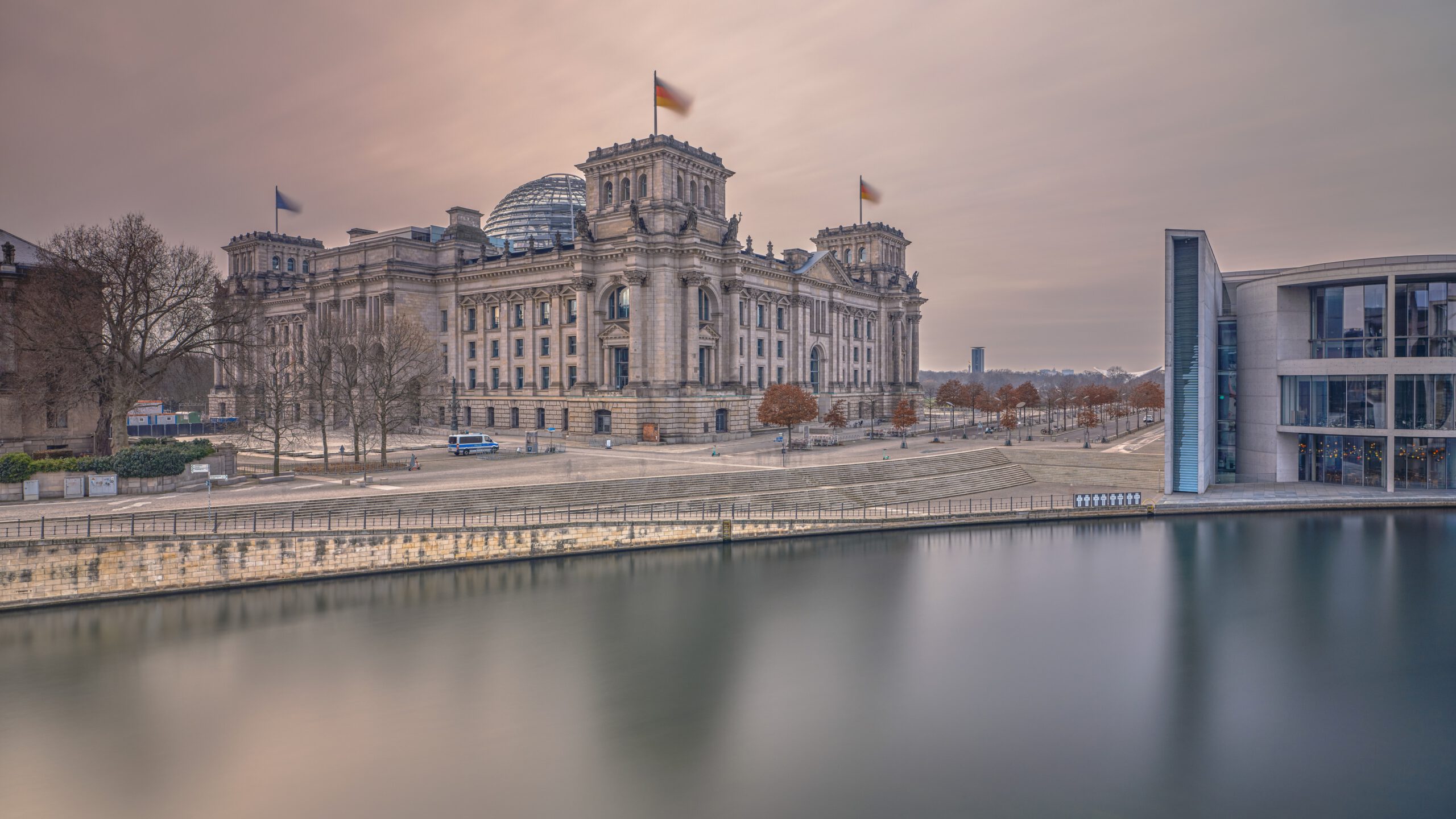
It inspires me again and again to include the different weather conditions between the seasons as an exciting stylistic device. This time I was able to give myself enough time to pick out locations and views around the Reichstagufer for myself.
My point of view here, the library of the German Bundestag. From there, because it is so beautifully elevated, there is a great view of the Reichstag building, the Spree and the promenade. On the right, the view leads past the Paul-Löbe-Haus, in the distance you can still see the roof of the „House of World Cultures“. To the left of the Reichstag building, adjacent to Friedrich-Ebert-Platz, the Reichstag President’s Palace is barely visible. Here historical and modern architecture are stylishly presented together.
On the right is the Marie-Elisabeth-Lueders-Haus, the third new parliament building on the Spree, on the left is the Paul-Löbe-Haus, designed by the architect Stephan Braunfels.
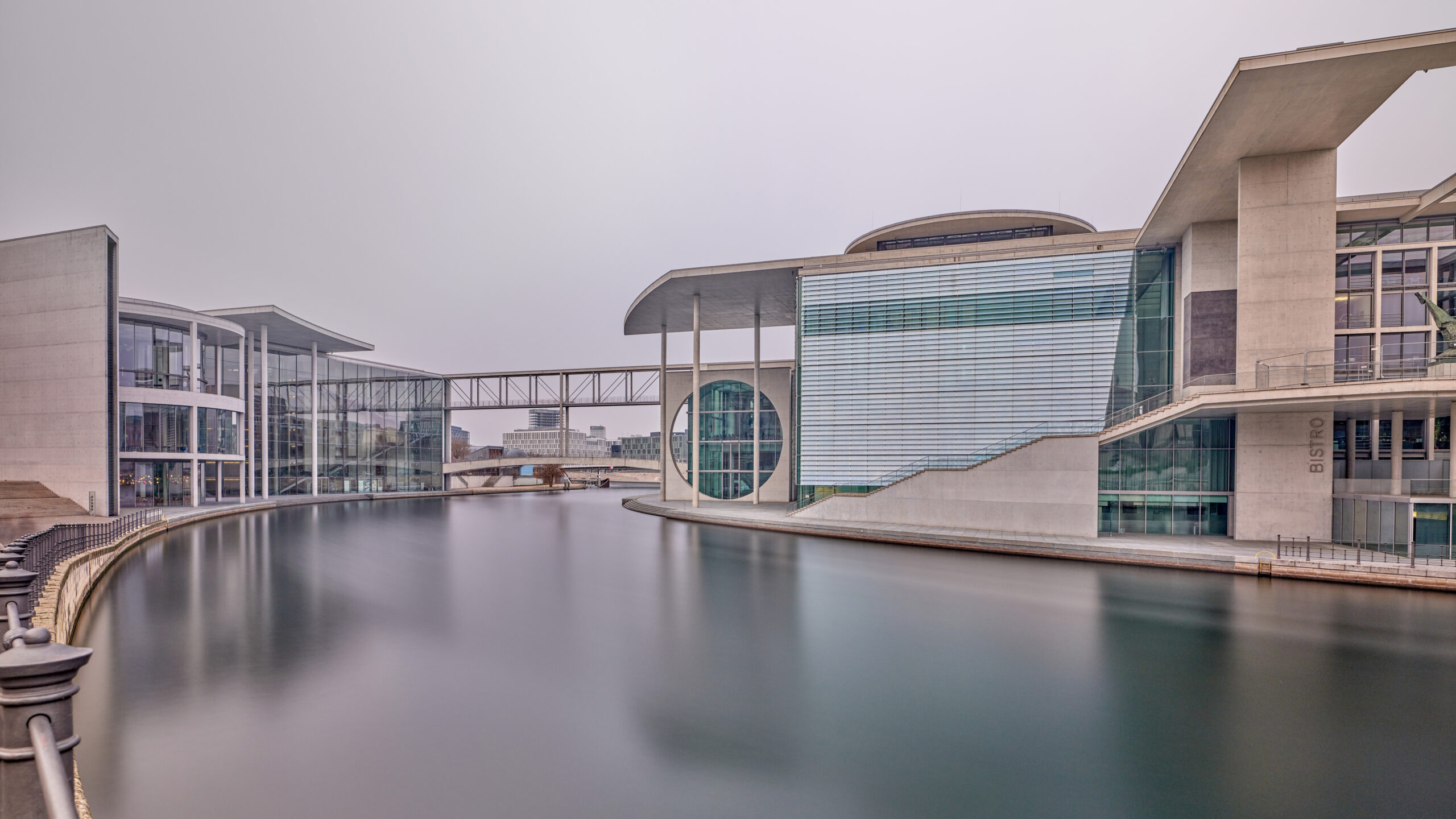
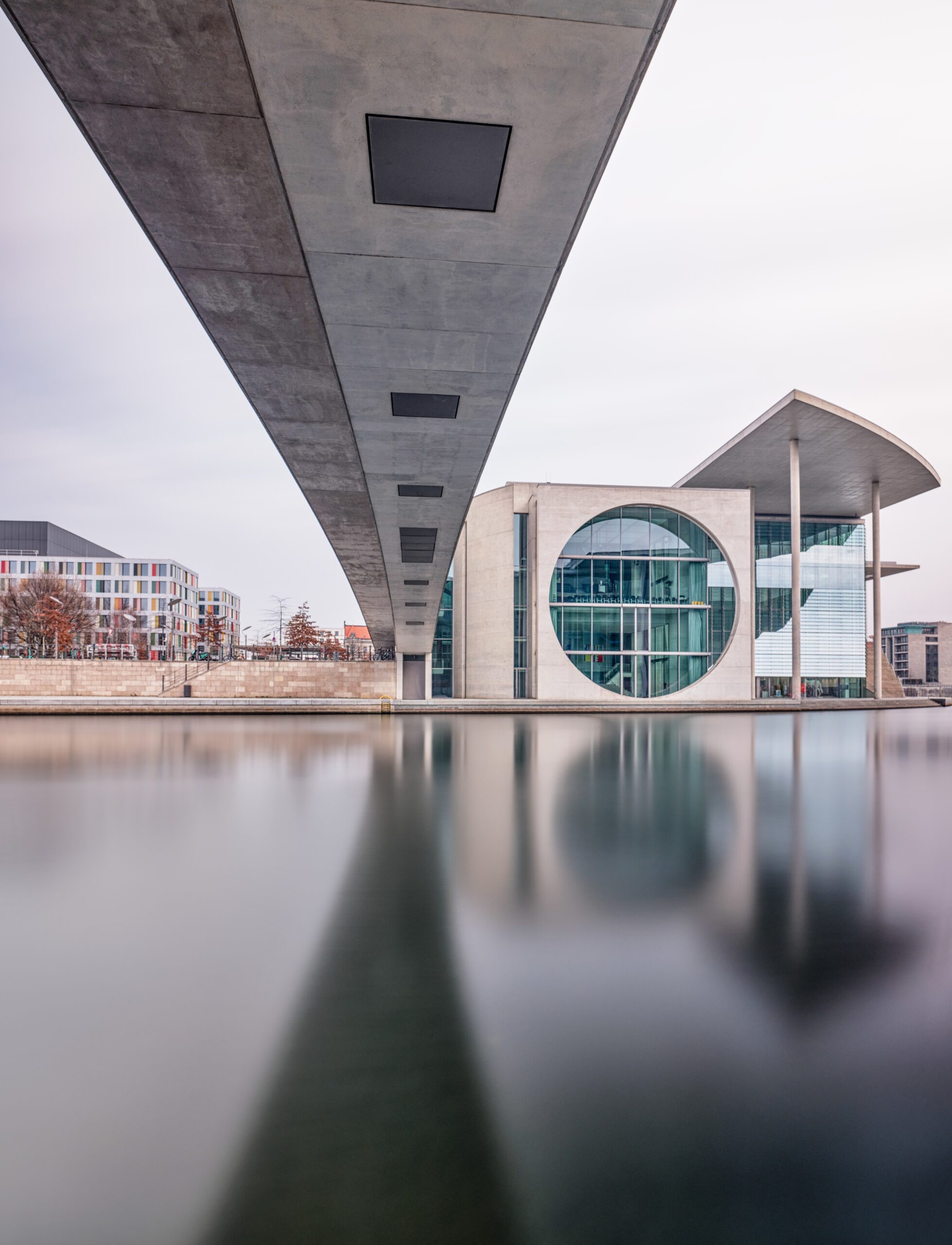
Time was in abundance. I had a whole week between Christmas and New Year to walk up and down the banks of the Reichstag in Berlin on that day in peace and quiet in search of suitable motifs. Even though I’ve photographed it a few times, weather and light conditions, as well as changing locations, always provide a new attraction for me, which sets the scene for this striking architecture along with the Spree.
On the right is the Marie-Elisabeth-Lueders-Haus, the third new parliament building on the Spree, on the left is the Paul-Löbe-Haus, designed by the architect Stephan Braunfels.nfels.
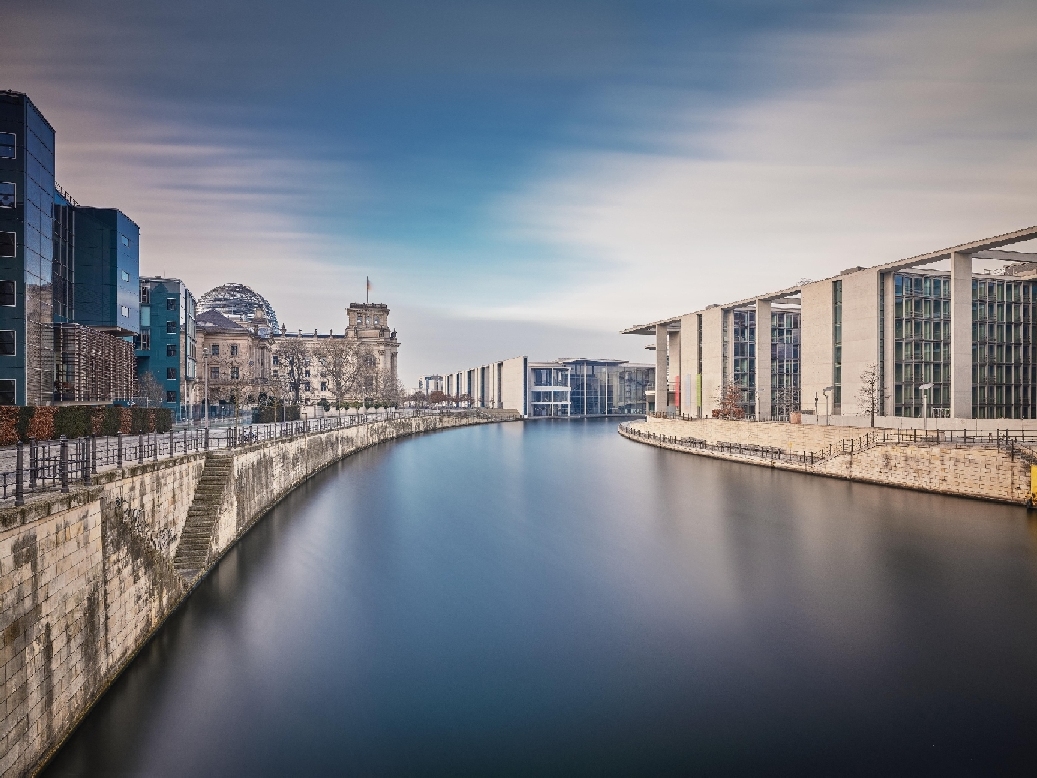
My local view leads from the Marshal Bridge along the Spree. Historic, historical and modern sights can be found throughout the city. So also on this promenade. Here you can stroll along in the direction of the Reichstag, and jog if you like. On the right side, with a direct view of the distant Paul-Löbe-Haus, you first walk past the library of the German Bundestag from the bridge.
For me, an eventful and great week with beautiful experiences and impressions came to an end. Of course, I am particularly pleased with the pictures I brought with me, which will remind me of this trip in the long term.nfels.nfels.
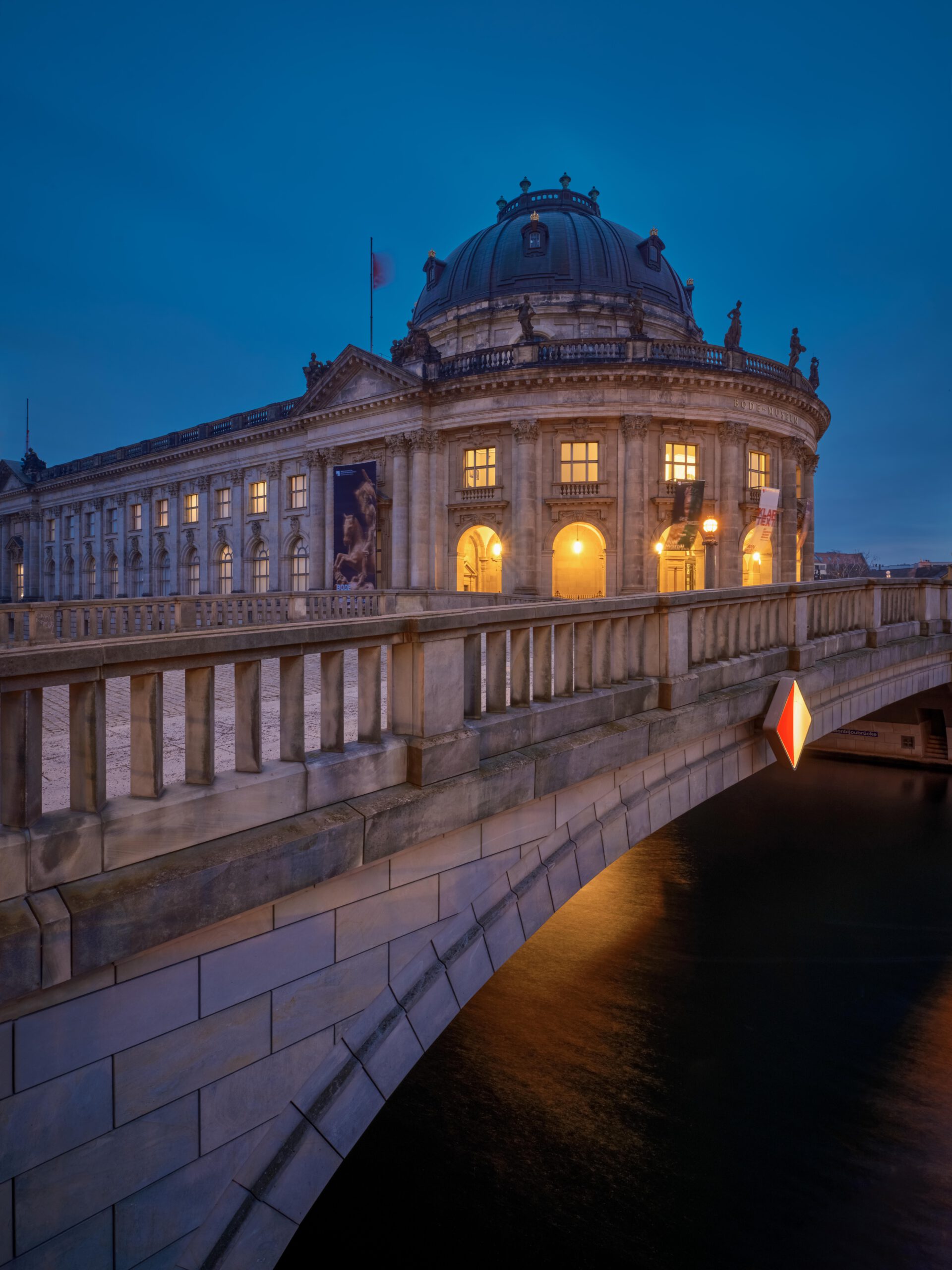
One of my photo destinations was the neo-baroque Bode Museum in the Mitte district, which belongs to the building ensemble of the Museum Island and is a UNESCO World Heritage Site.
The location was found. Once the tripod and camera were aligned, all I had to do was wait for the moment of the blue hour and the onset of lighting that illuminated the museum. If everything is prepared accordingly, I enjoy the time on site to take a detailed look around. Wonderful how the daylight says goodbye and the increasing darkness increases. The blue hour was already setting in, the lighting of the museum was still a long time coming. An exciting moment that sets in. Then the time has come, the lighting comes on. Now the moment decides when the camera is triggered. A sample photo tells me whether it fits or whether I should just wait a little longer. I ended up taking seven shots, some of them monochromatic.
Another photographically filled day with beautiful impressions and experiences came to an end. Now it was time to pack up the camera, meet friends later and end the evening appropriately before starting a new one the next day.
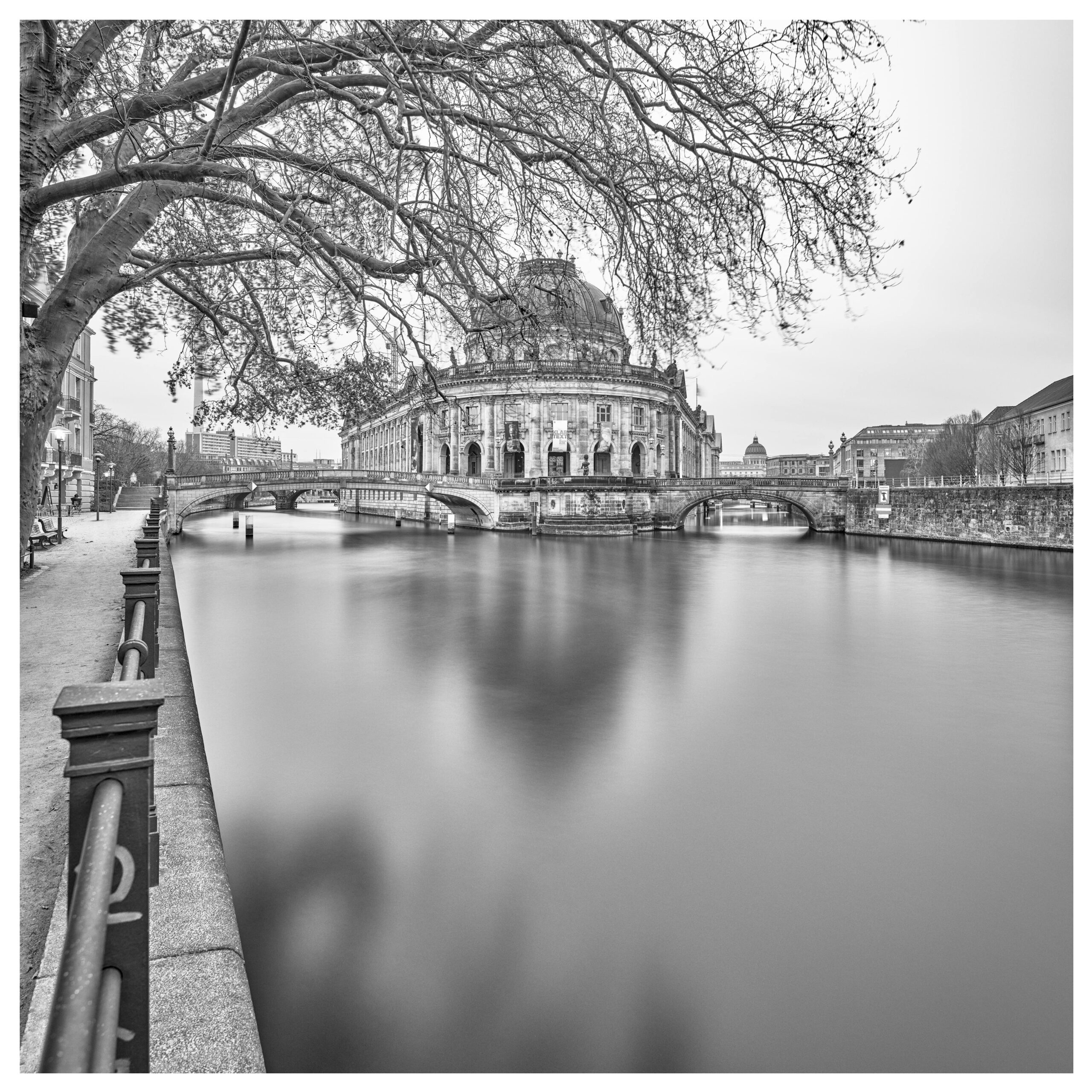
Especially when there is a lot of time, you can look out for a suitable location with peace of mind. Once this has been found, the question arises as to the composition of the image, which I always find very exciting. A nice challenge, which is also required by the choice of focal length and format.
Again, the focus was on the Bode Museum as the central object, but the Monbijour Bridge was also included in the foreground. The riparian zone including railings as corner runners and the bare, leafless tree as a further design element. The adjoining architecture runs to the right of the picture. On the left, walking the way into the picture, you can still see something of the Berlin TV tower on Alexanderplatz.
By using ND filters (1.8 + 3.0) I achieved my desired long exposure to make the water surface of the Spree correspondingly structureless. An additional polarizing filter reduced existing reflections. I deliberately chose a monochrome picture here to emphasize this historical architecture, appropriate to the season.
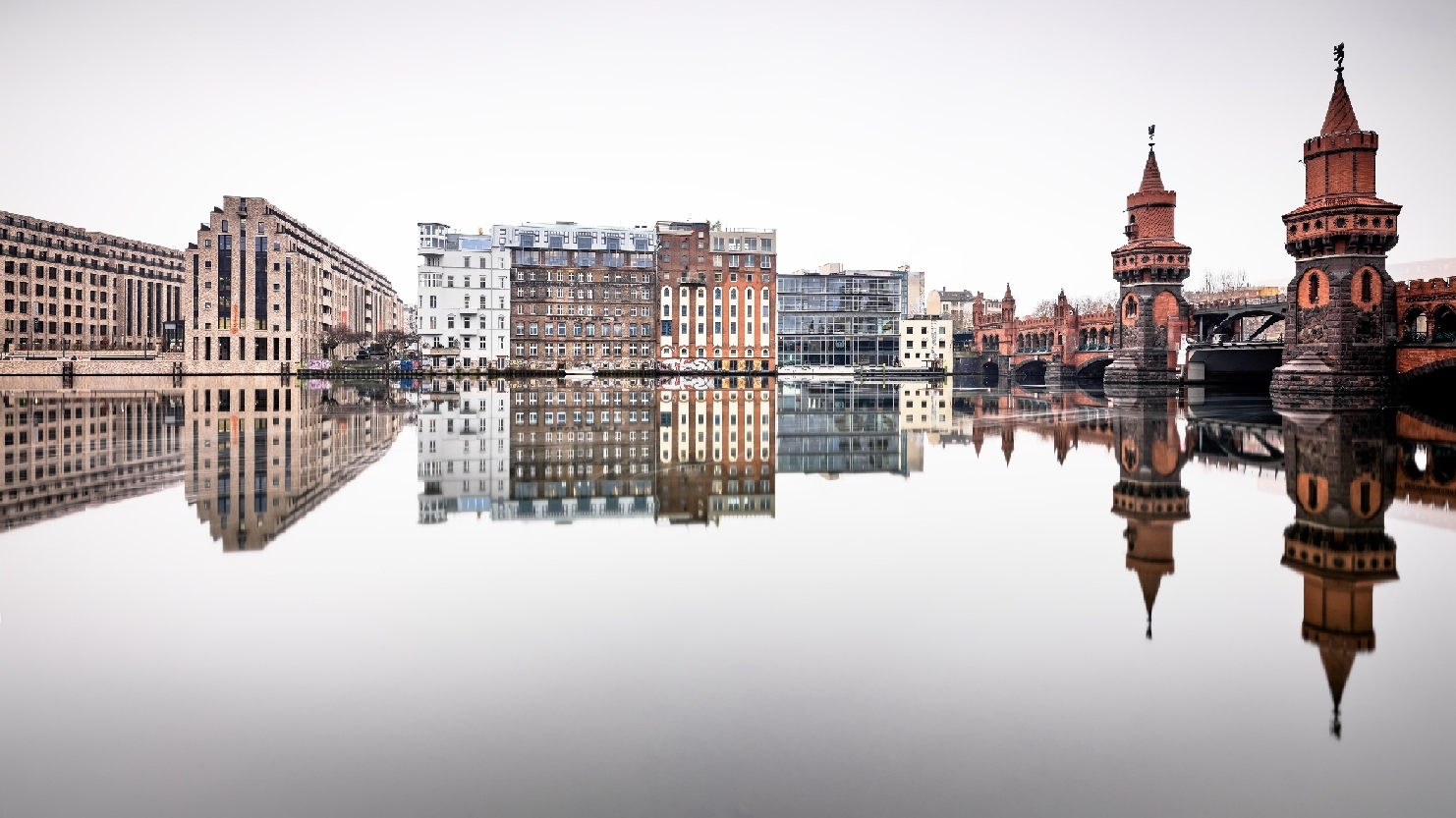
On another day I drove to the Oberbaum Bridge again. Days beforehand, the Spree had mostly frozen over due to the lower temperatures. On this day, however, it was a mild 11 degrees and the sky looked cloudy. It looked more like light rain. But there was absolutely no wind, predestined for a dreamlike reflection.
Always fascinating, the fantastic view of the city and the river from every side around the bridge. It is worth exploring the whole area on foot. If you are traveling here, you should take your time. There is too much that is attractive to discover.
The Oberbaum Bridge is considered a landmark of the trendy Friedrichshain-Kreuzberg district and inspires with its historical and monumental presence. From my point of view there is a beautiful view that puts the bridge in the spotlight. In addition, there is a parade of old and partly newer buildings running along the left bank, which with their varied architecture really appealing and harmoniously fit into the overall picture.
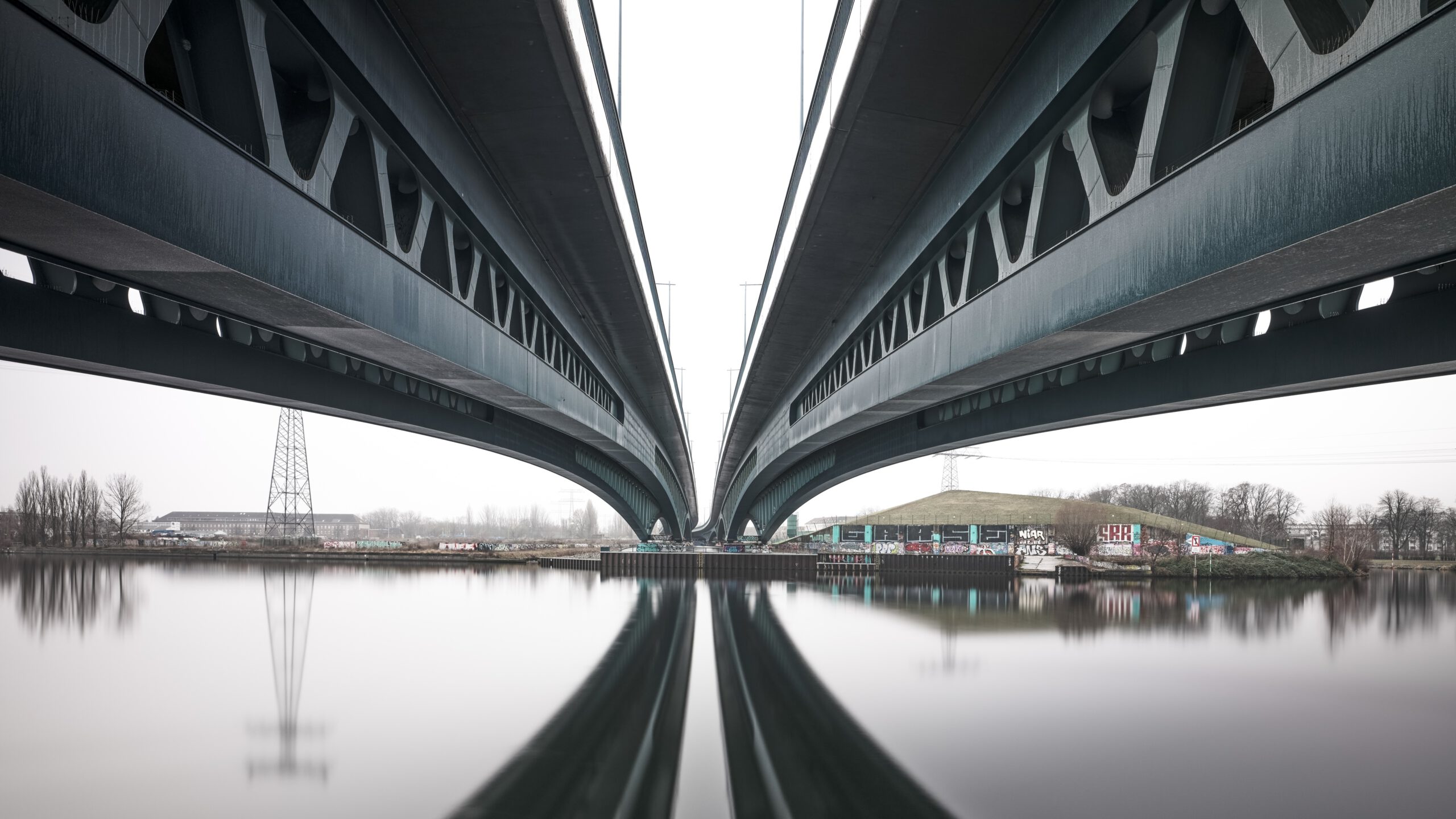
The evening before I planned my photo tour for the next day. I only needed to place the shortlisted motifs on the city map in order to visit them one after the other. At the same time, I looked for the U-Bahn, S-Bahn and bus connections. For that day, my intended photo destinations were the Oberbaumbrücke and the Minna-Todenbrücke, a 1246.70m long steel composite bridge in the Berlin district of Treptow-Köpenick, which crosses the Spree above the Britzer connecting canal.
Right after breakfast I left and took the subway to Warschauer Strasse, where my picture „Oberbaumbrücke, a landmark of Berlin“ was created. Then I took the S-Bahn directly from there and finally the bus again to get to my other photo destination, the Minna-Todenhageb Bridge. The sky was already getting darker, there was fog in the air and it seemed increasingly hazy. In between it started to dribble slightly, but then stopped again quickly. For me a sign to hurry up a bit. Who knew what might be about to happen. Arrived at my photo spot, I walked under the bridge and immediately set up the tripod and camera. In order to get the water surface of the Spree smooth, as a nice contrast to the rough steel construction of the bridge, I also used ND filters. For such a long exposure, two ND filters (1.8 + 3.0) were required.
First I photographed in landscape format with a focal length of 23mm (MF), which I really liked. Then I decided on a picture in portrait format. In order to achieve a different image effect and detail, I chose a 110mm (MF) focal length. That’s how this picture came about. All in all, it was a successful and exciting day for me, as it took me to both familiar and unknown sights worth seeing.
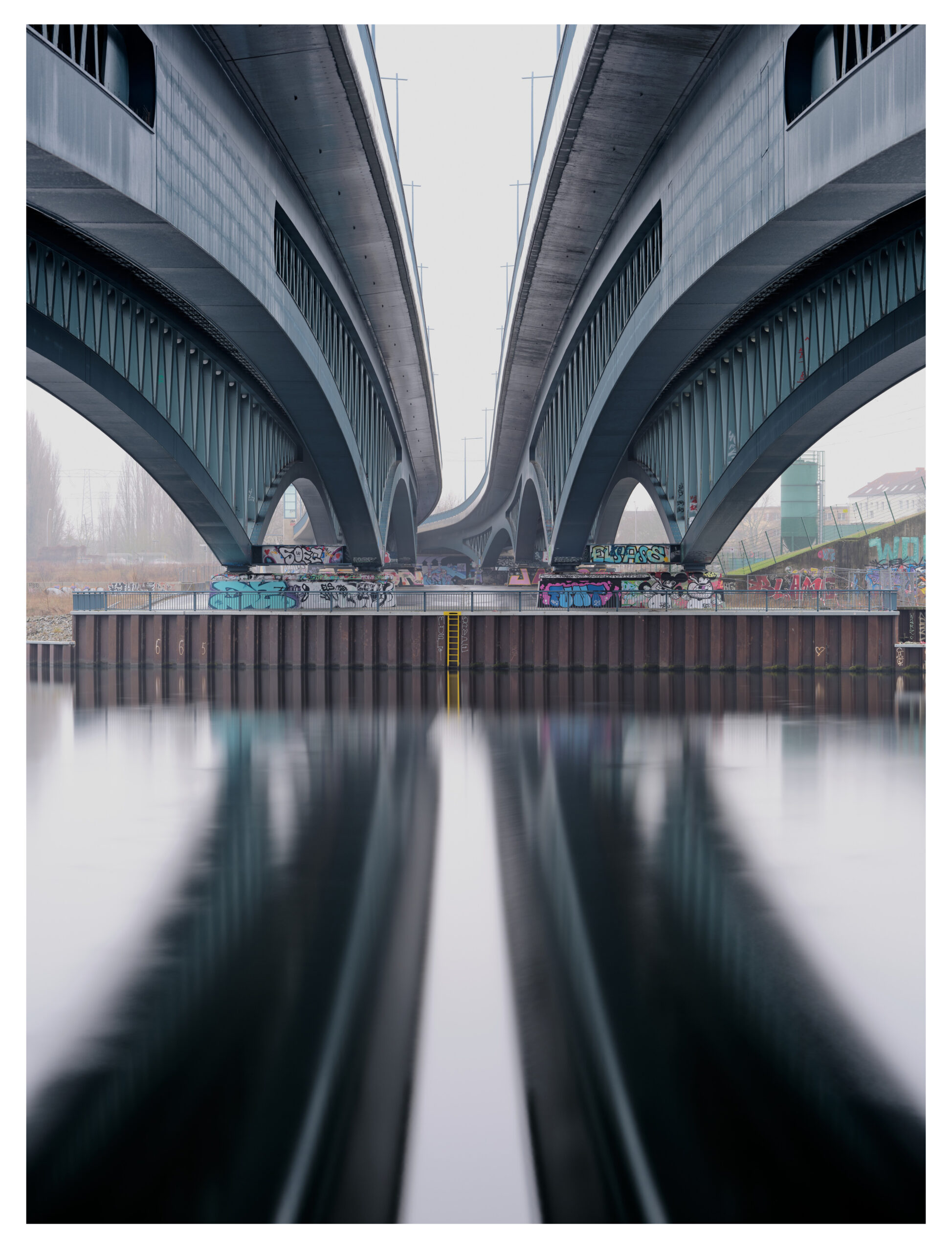
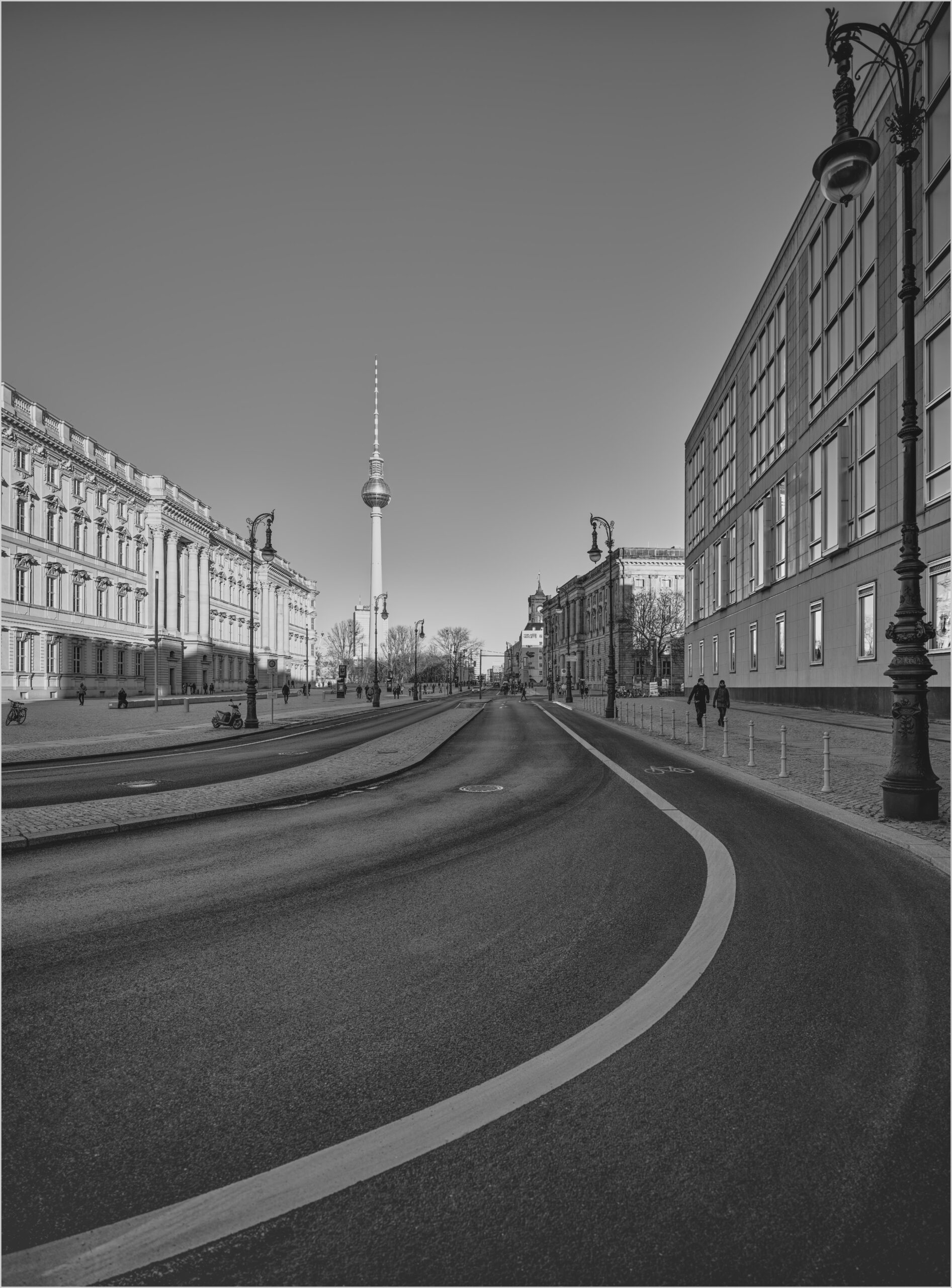
On the way on the Spreeinsel in the historic center of Berlin, district Mitte in the district of the same name. From my location on Schlossplatz, the view leads inevitably to the 368 m high Berlin TV tower, which opened in 1969. There is a viewing platform at 203 m, above which is a revolving restaurant at 207 m.
On the left you can catch a glimpse of the baroque south facade of the Berlin Palace. The sponsor is the Humboldt Forum Foundation. The building was constructed between 2012 and 2020 on the site of the historic Berlin Palace and features its reconstructed facades on three exterior sides and in its inner courtyards. With display collections from the Berlin State Museums, the Berlin City Museum and the Humboldt University in Berlin, it expands what the Museum Island has to offer.
Opposite, on the right side, the first building is the European School of Management and Technology Berlin, a private business school based in Berlin that is equivalent to a university. Continuing down the street, you will find the Hanns Eisler Berlin State Academy of Music, which was founded in 1950 and is one of the leading music academies in Europe. Further on you reach the Rathausbrücke, where the Rathausstraße begins. After a few minutes‘ walk you reach the Red Town Hall, seat of the incumbent governing mayor Franziska Giffey, the Senate Chancellery and meeting place of the Senate of Berlin. Part of the tower of the Red Town Hall can still be seen in the picture.
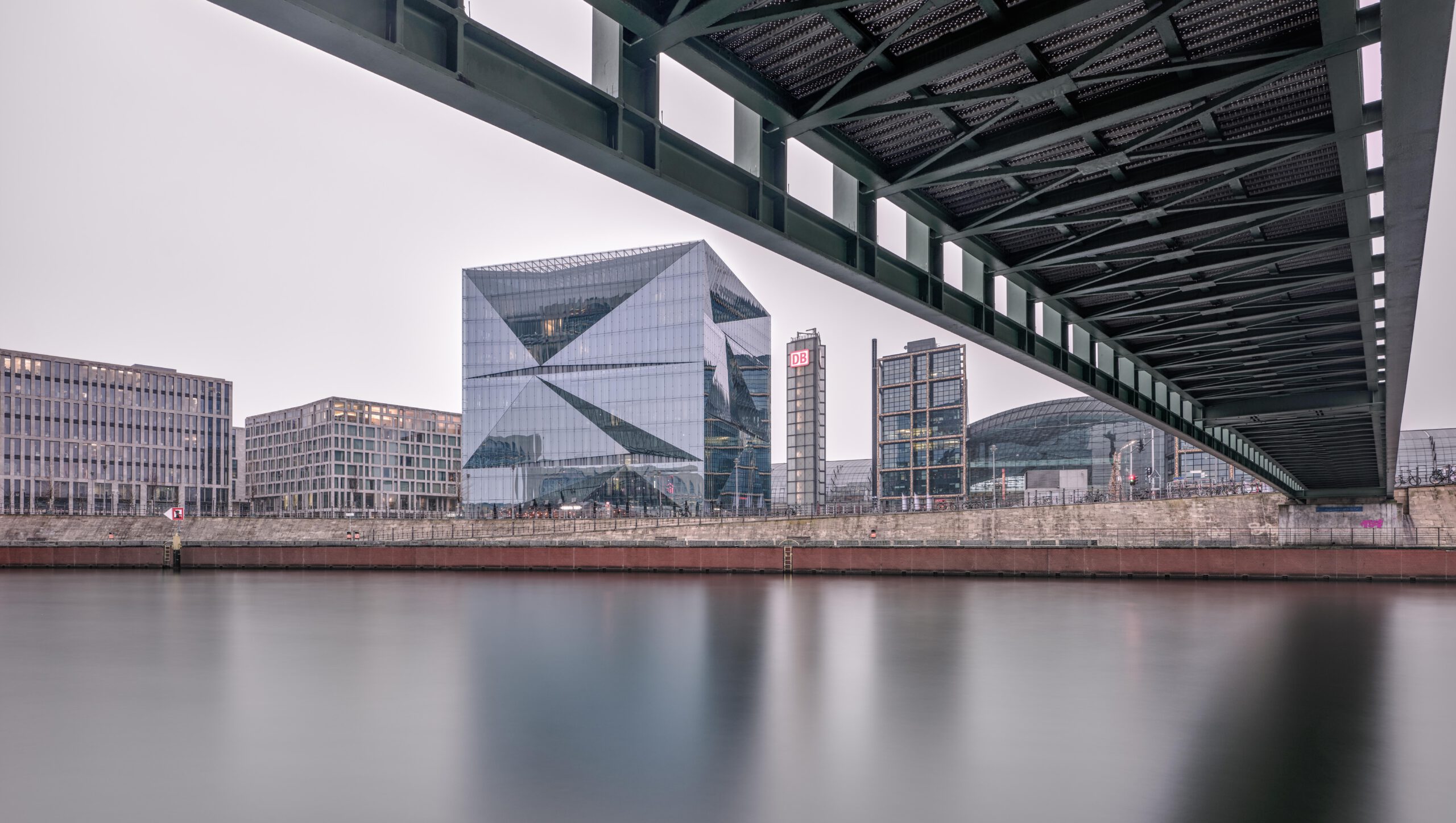
In the morning we first went to the Oberbaum Bridge, which connects the districts of Kreuzberg and Friedrichshain. From there to the Minna-Todenhagen Bridge in the Treptow-Köpenick district and finally seen here, also to the Berlin Central Station, in the Mitte district, Moabit district, to get a photographic view of the opposite Central Station under the Gustav-Heinemann Bridge lay.
Immediately to the right of the main station is the Hugo-Preuss Bridge, at the entrance to the Berlin-Spandau shipping canal. It runs seamlessly across, along the Spree, into the Kapelle Ufer. An ideal view to photograph the course of the promenade from this bridge. There was also a portion of „photographer’s luck“, the twilight hour was certain for me.
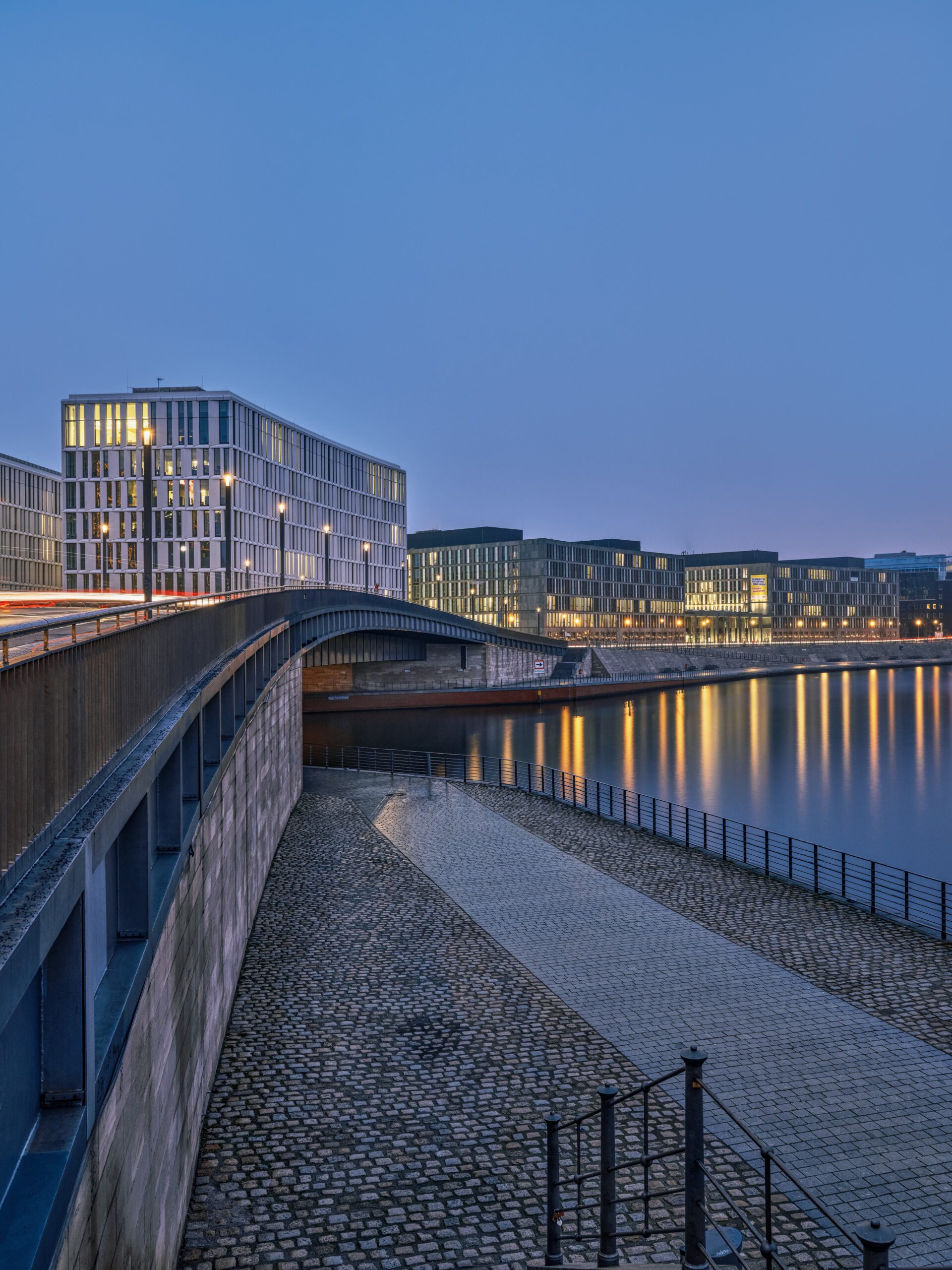
A wonderful and impulsive journey came to an end. Not only that I was able to see my friends there again after a long Corona abstinence, but also that I was able to organize my time photographically, regardless of the weather. The joy of finally traveling again, getting to known and unknown places in order to capture sights with the camera, remains an unforgettable experience for me.